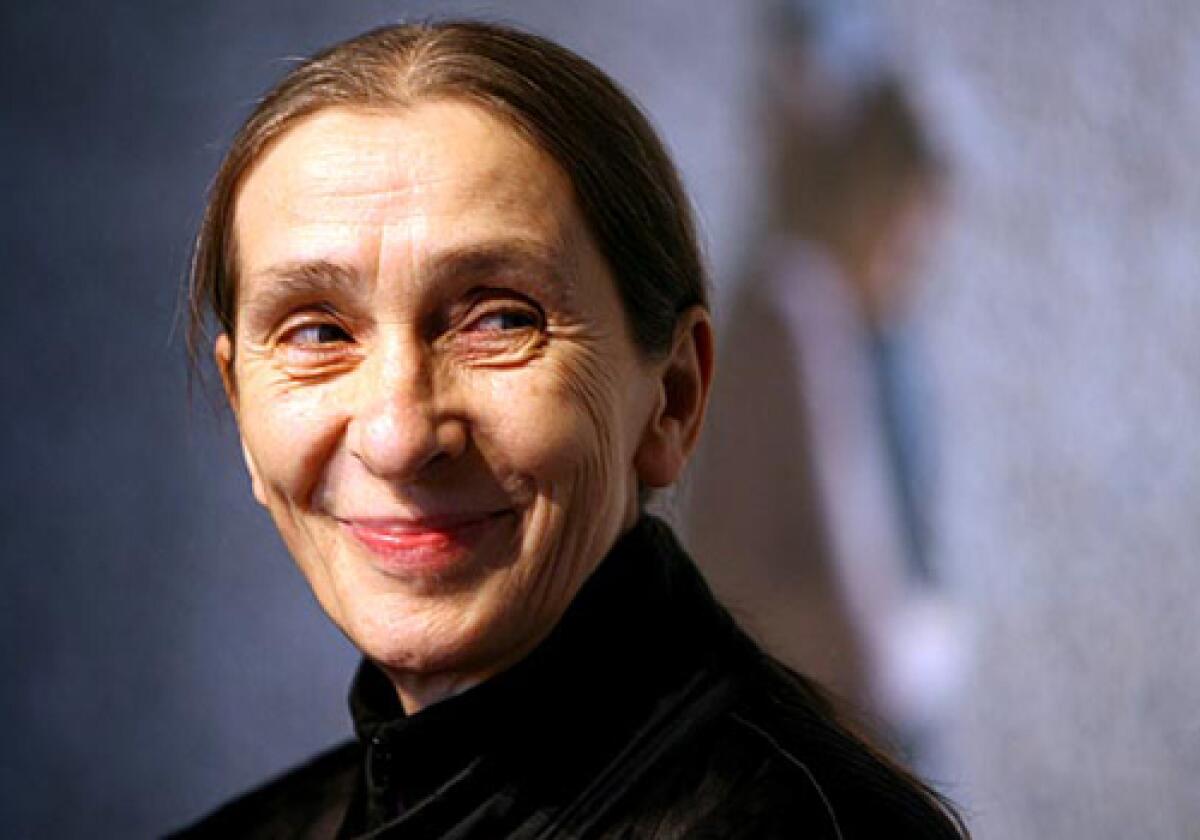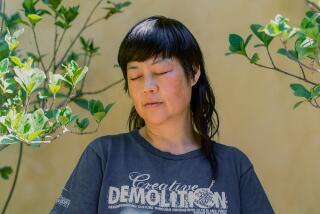Pina Bausch dies at 68; innovative German choreographer

Pina Bausch, a German choreographer and dancer whose innovative work transcended traditional barriers between dance and theater, died Tuesday in Wuppertal, Germany, five days after being diagnosed with cancer. She was 68.
Bausch was the artistic director of Tanztheater Wuppertal, founded in 1973 in the working-class town of Wuppertal and translated as “dance theater.”
“Her influence extended far beyond the dance world into the theater world, and even movies and the staging of opera,” Lewis Segal, former Times dance critic, said Tuesday. “It is limiting to call her a choreographer; she liked the term ‘dance theater.’ She was important because she thought everything belonged together -- speech, movement, design, commenting on the audience.
“She was famous for saying that she was not as interested in how people move as in what moves people. She wanted to tell a story.”
Born Josephine Bausch on July 27, 1940, in Solingen, she studied at Folkwang School in Essen and at the Juilliard School in New York. She danced at the New American Ballet and the Metropolitan Opera in New York before returning to Germany to found her company.
Bausch has a particularly strong connection with the Los Angeles arts scene: Her company made its American debut in L.A. as the opening performer at the 1984 Olympic Arts Festival, an event that signaled for many the city’s artistic coming of age.
Bausch’s company presented a controversial staging that included her 1975 take on Igor Stravinsky’s “The Rite of Spring,” which found barefoot women and bare-chested men writhing in tons of peat moss.
Robert Fitzpatrick, artistic director of the Olympic arts extravaganza, said Tuesday that he called upon Bausch to open the events because her name kept coming up when he polled arts leaders about whom he might invite. “I kept hearing about this crazy artist: ‘I don’t know if she is a theater person or a dance person; her name is Pina Bausch, she’s the most astonishing choreographer or dancer or God-knows-what that I’ve ever seen,’ ” Fitzpatrick said.
While Fitzpatrick sought to make Bausch’s opening night at Pasadena Civic Auditorium “black T-shirt, not black tie,” he was horrified to see one couple arrive wearing a white smoking jacket and an elegant white dress, and more horrified still when they sat in the front row and frenzied dancers kicked peat moss onto their clothes.
“They were covered with brown stains,” Fitzpatrick recalled. “I asked them to stay for a drink, and offered to pay their dry-cleaning bill.”
Bausch’s company has continued its in-your-face relationship with Los Angeles -- and indeed, the world -- performing in recent years at UCLA’s Royce Hall and at the Music Center. In 1996, the Dorothy Chandler Pavilion stage was host to Bausch’s “Nur Du” (“Only You”), a 3 1/2 -hour epic inspired by the choreographer’s experiences in several U.S. cities, including L.A.
Among Bausch’s recent works are “Nelken” (“Carnations) from 2005, offering a parody of the classical ballet danced on a floor covered with flowers; and 2004’s “Ten Chi,” a nearly three-hour plotless opus continuing Bausch’s explorations of geographic regions through staging and movement -- in this case, Japan. “Ten Chi” received its North American premiere at Royce Hall in 2007; staging elements included snowflakes, cherry blossoms and parts of giant whales. Later this month the company had been scheduled to perform 1985’s “The Seven Deadly Sins.”
“These long, dreamlike pieces . . . at a certain point, you stop looking at it like a normal dance piece and perceive it as a dreamlike state,” Segal said. “If an enormous whale floats in past midnight, it’s not a special effect, it’s part of the exterior landscape she has pulled you into. It changes your sense of time, of what theater can do to you.”
Though many, including Fitzpatrick, describe Bausch as so soft-spoken one had to lean in to catch her words, many of her works have been described as violent, brutal and difficult to watch.
The opening performance at the Olympic arts festival also included “Café Mueller,” in which dancers stumble about the stage, crashing into tables and chairs. Excerpts from that dance, as well as another of her works, “Masurca Fogo” (“Fiery Mazurka”), were featured in the 2002 Pedro Almodovar film “Talk to Her,” one of Bausch’s several forays into film.
Though challenging to an audience, the result always fascinates, Fitzpatrick said. “Look, listen, pay attention, don’t be afraid,” he said. “Or be afraid -- but keep looking anyway.”
Renae Williams Niles, director of dance presentations for the Music Center, said that upon learning of Bausch’s death, “The first question I asked is: ‘What will we do?’ There are certain people that I’ve given immortality to, and I would have to say that Pina Bausch is definitely one of them.
“There are times when I refer to choreographers as dance makers, and times when I call them artists,” Williams Niles said. “I see Pina Bausch very much as an artist; she included everything you see and feel into a theatrical, live experience.”
Bausch is survived by Ronald Kay, her companion since 1981, and their son, Rolf Salomon Bausch.
More to Read
The biggest entertainment stories
Get our big stories about Hollywood, film, television, music, arts, culture and more right in your inbox as soon as they publish.
You may occasionally receive promotional content from the Los Angeles Times.










